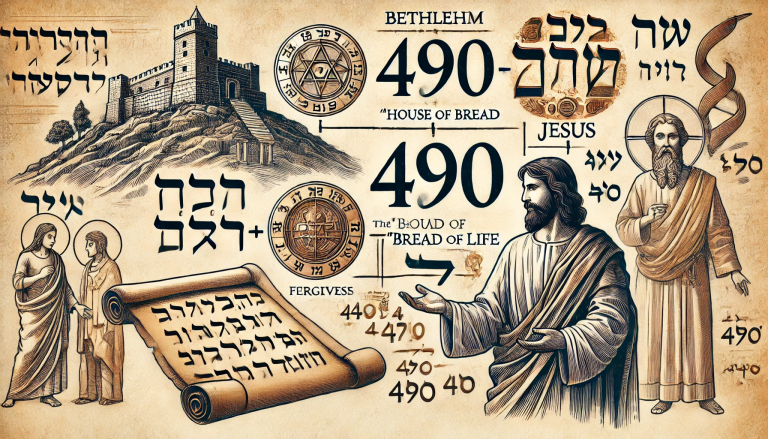
By Larry Billinger
The Verse in Context
Genesis 3 tells the story of Adam and Eve’s disobedience in the Garden of Eden. After they eat from the tree of the knowledge of good and evil, God pronounces judgments on the serpent (Satan), Eve, and Adam. Genesis 3:15 is a crucial part of God’s judgment on the serpent.
The Protoevangelium
The term “Protoevangelium” means “first gospel.” It is used to describe Genesis 3:15 because this verse is considered the first hint of the gospel message—the good news of a Redeemer who will ultimately defeat evil.
Genesis 3:15 (NIV): “I will put enmity between you and the woman, and between your offspring and hers; he will crush your head, and you will strike his heel.”
- “I will put enmity between you and the woman, and between your offspring and hers;” This indicates a perpetual conflict between Satan and humanity, suggesting a continuous spiritual battle between good and evil.
- “He will crush your head,” The “he” is interpreted by many Christians as Jesus Christ. Crushing the head symbolizes a fatal blow, signifying ultimate victory over Satan.
- “And you will strike his heel.” This indicates that Satan will harm the descendant of the woman, but it will not be a mortal wound. Christians see this as a reference to Jesus’ suffering and crucifixion.
Ramifications in the Rest of Scripture
Messianic Prophecy
Genesis 3:15 lays the foundation for the entire biblical narrative of redemption, foretelling the coming of a savior who will defeat evil. This theme reverberates throughout the Old and New Testaments.
Old Testament References
- Isaiah 7:14: “Therefore the Lord himself will give you a sign: The virgin will conceive and give birth to a son, and will call him Immanuel.” This prophecy of a virgin birth connects to the “offspring” theme in Genesis 3:15.
- Isaiah 53:5: “But he was pierced for our transgressions, he was crushed for our iniquities; the punishment that brought us peace was on him, and by his wounds we are healed.” This passage speaks of the suffering servant, which Christians see as Jesus, and correlates with the “strike his heel” part of Genesis 3:15.
New Testament Fulfillment
- Galatians 4:4-5: “But when the set time had fully come, God sent his Son, born of a woman, born under the law, to redeem those under the law, that we might receive adoption to sonship.” This emphasizes Jesus being born of a woman, directly linking to the offspring mentioned in Genesis 3:15.
- Romans 16:20: “The God of peace will soon crush Satan under your feet. The grace of our Lord Jesus be with you.” Paul alludes to the ultimate victory over Satan, echoing the promise of Genesis 3:15.
- Hebrews 2:14: “Since the children have flesh and blood, he too shared in their humanity so that by his death he might break the power of him who holds the power of death—that is, the devil—” This passage highlights Jesus’ victory over the devil through His death.
Arguments Against the Messianic Interpretation
Jewish Interpretation
- Not Messianic: In traditional Jewish interpretation, Genesis 3:15 is not typically seen as a messianic prophecy. It is often interpreted more literally as a description of the ongoing struggle between humanity and serpents, or metaphorically as the struggle between good and evil in a more general sense.
- Rebuttal: The literal interpretation overlooks the symbolic nature of the passage. The serpent represents Satan, and the offspring of the woman refers to humanity in general but finds its ultimate fulfillment in a specific descendant—Jesus Christ. This interpretation aligns with the broader narrative of redemption throughout the Bible, where specific individuals often represent larger groups or themes.
- Suffering and Triumph: Some Jewish scholars argue that the verse speaks to the suffering and eventual triumph of humanity over evil forces, without necessarily pointing to a single messianic figure.
- Rebuttal: While the broader theme of human triumph over evil is valid, the specific language of crushing the head and striking the heel points to a singular, decisive event. Jesus’ life, death, and resurrection uniquely fulfill this prophecy, as they represent the ultimate victory over sin and death—a victory achieved by one individual on behalf of all humanity.
Scholarly Criticism
- Contextual Reading: Some modern scholars argue that reading Genesis 3:15 in its immediate context does not necessitate a messianic interpretation. They suggest that the verse should be understood within the broader narrative of Genesis, focusing on the immediate consequences of the fall rather than projecting far into the future.
- Rebuttal: While the immediate context is important, the verse’s deeper significance is revealed through its fulfillment in the New Testament. The entire Bible is a cohesive narrative, and understanding Genesis 3:15 in light of later revelations provides a fuller picture of its meaning. The New Testament writers, inspired by the Holy Spirit, saw this verse as a foundational prophecy pointing to Christ.
Conclusion
Genesis 3:15 holds a significant place in Christian theology as the first promise of a Redeemer who will defeat Satan. This interpretation is supported by various scriptures throughout the Bible that point to Jesus Christ as the fulfillment of this prophecy. While there are alternative interpretations, particularly within Jewish tradition and among some modern scholars, the messianic reading of Genesis 3:15 remains a cornerstone of Christian belief, providing both a foundation for the gospel message and a source of hope and faith for believers.





